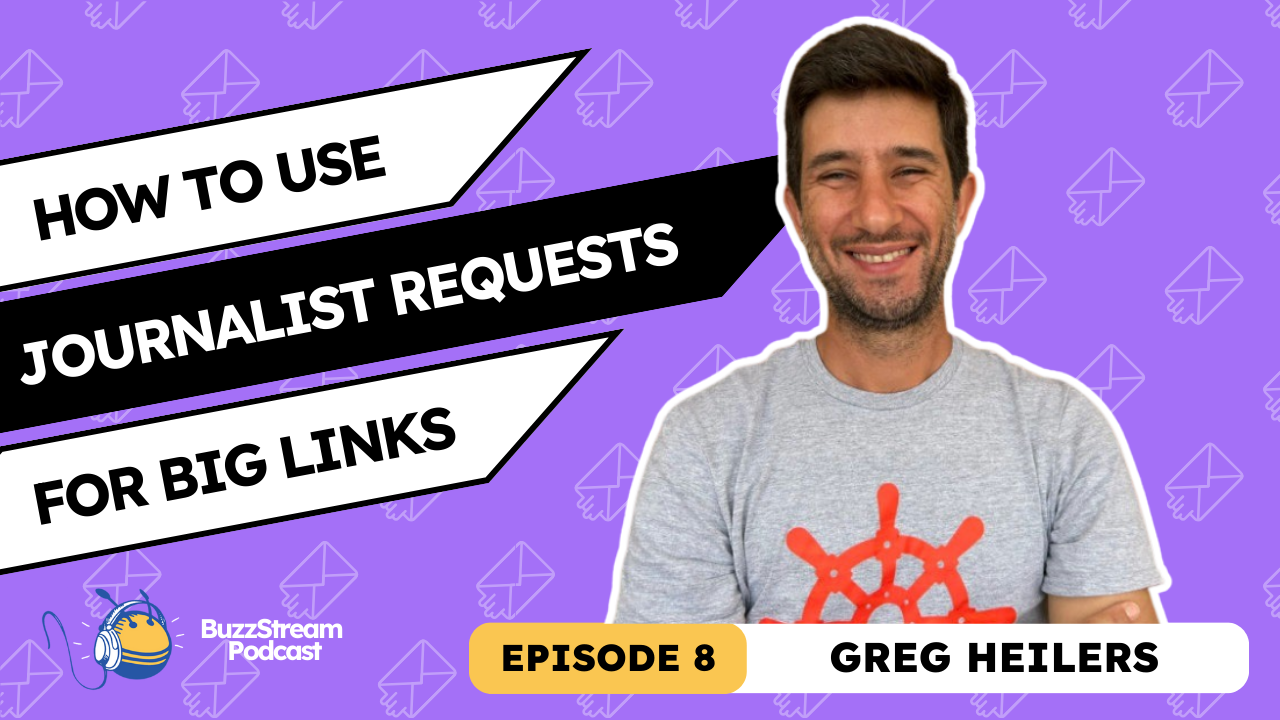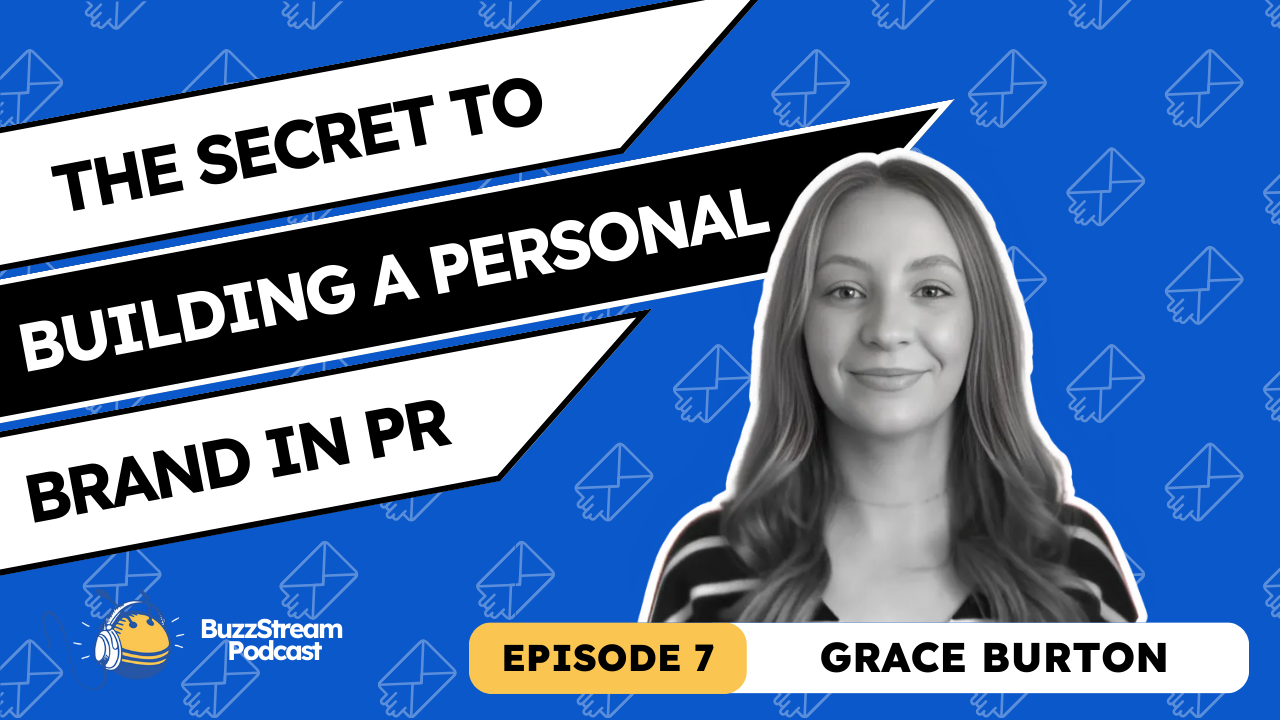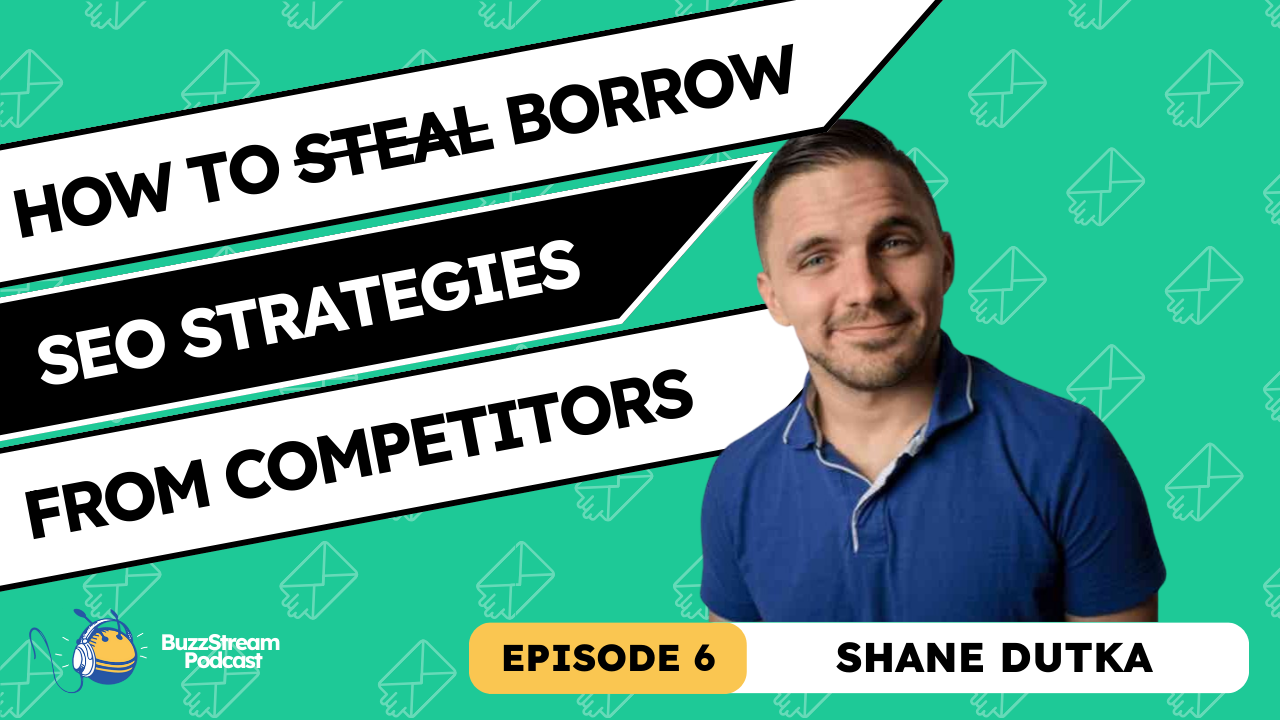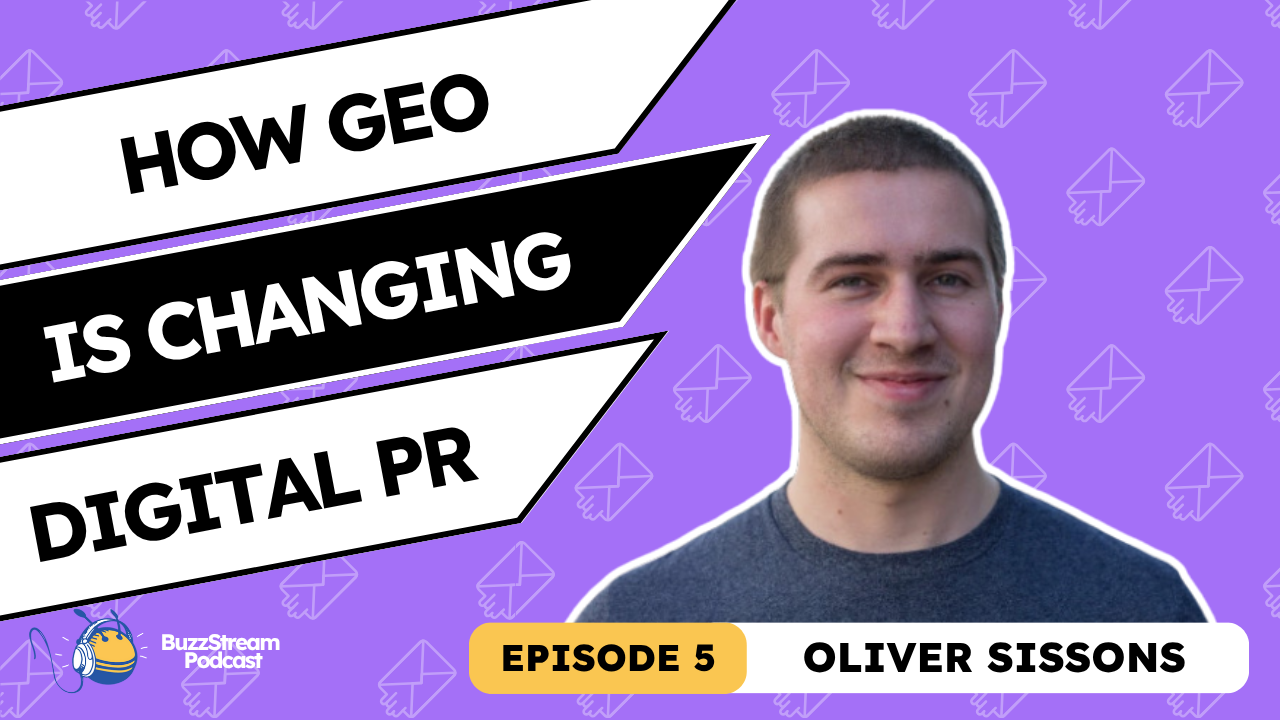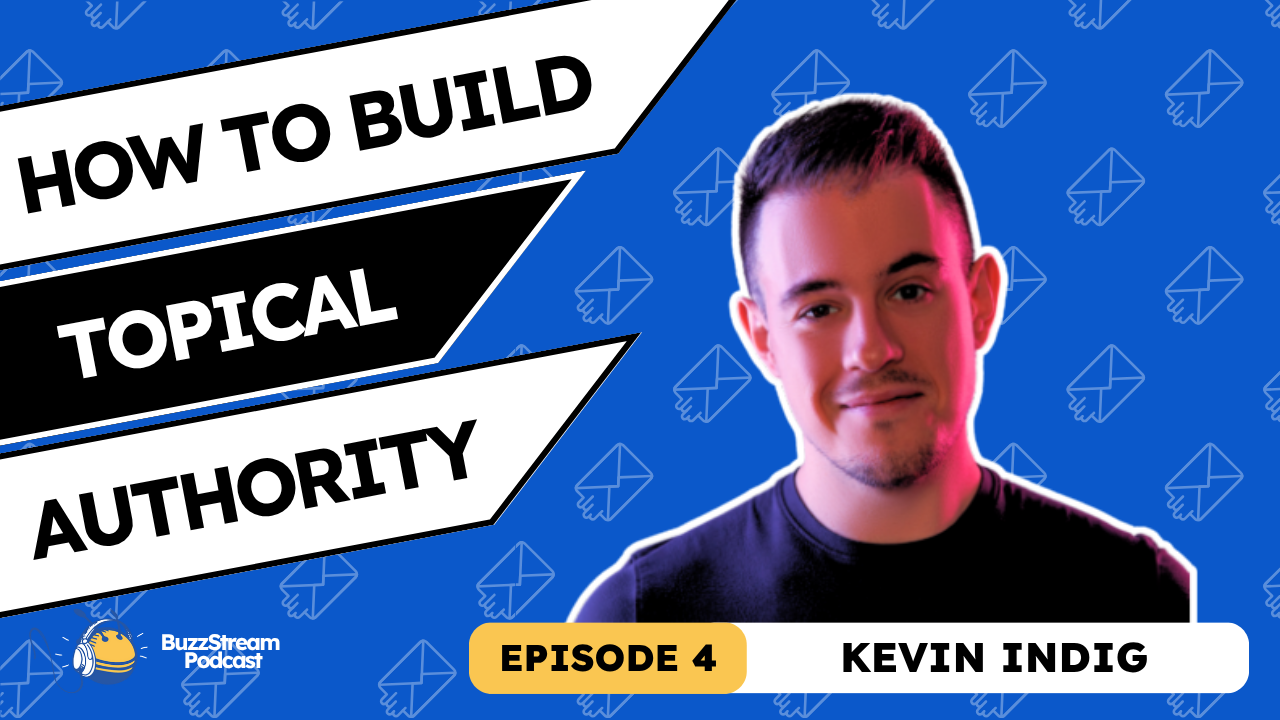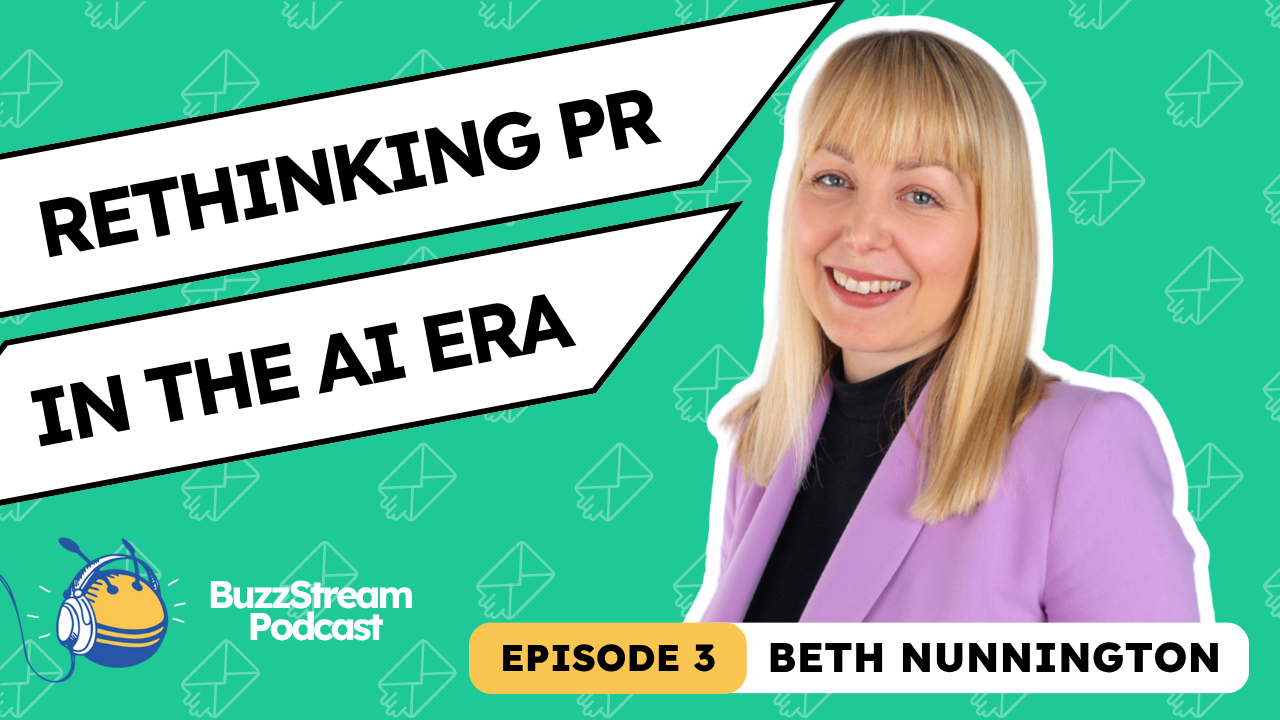Table of Contents
PRs sometimes get so caught up in the hunt for links and coverage that we forget a real person is on the other side of our pitch emails.
So, I wanted to talk to Rosie Taylor, an award-winning health and consumer affairs freelance journalist and author of the Get Featured Substack, about what it’s like to be a journalist.
Rosie also hosts the Mother Bodies podcast, which focuses on postnatal health. (She’s looking for sponsors!)
This in-depth conversation hopefully helps shed some light on what journalists genuinely care about in your email pitches and why it’s so important to treat journalists like humans and not as link targets.

-
Rosie has time to open about 5% of pitches; the ones that stand out are personalized, clearly relevant, and offer something exclusive or timely.
-
Freelancers have more flexibility in what and where they pitch, meaning they can shop stories around, but have less control over whether or not it gets coverage.
-
Journalists —especially freelancers— usually can’t guarantee backlinks.
-
The best pitches make journalists’ jobs easier by including assets like expert quotes, images, and a fully formed story idea, not just a broad concept.
-
Genuine relationship-building matters; even a thoughtful message or social media interaction can help you stand out from a sea of generic pitches.
-
Knowing a journalist’s content style is as important as knowing their beat—a health reporter who only writes investigations won’t be interested in your quick tips listicle.
Below is a slightly edited transcript based on our chat.
What is a day in the life of a freelance journalist?
Rosie Taylor: Okay, that’s good question. So yeah, it’s interesting what you were saying about putting a human face to the other side of the kind of emails because I do find that sometimes that people.
Sometimes forget that journalists are human beings and maybe journalists a little bit guilty if you can, that PRs are human beings too sometimes.
But yeah, certainly when I do media training per space, people sometimes they’re like, oh wow, a real journalist. They have to speak to them. I’m like, I am also a person.
You’re like a CEO. I’m much more scared of you.
But yeah, sometimes journalists, I dunno why we have a kind of reputation as being. Other, somehow different from normal everyday people doing their jobs and definitely not the case.
So yeah, in my job, I guess probably the same as everyone else: I start by going through my emails, looking at pictures that have come in and looking at pitches that I’ve sent as well.
Because as a freelancer, I’m in the kind of unique position that I do see both sides of the fence.
So I get pitched to by PRs, lots of them on a daily basis.
But I also have to pitch, that’s how I make a living.
So I pitch my ideas to editors. And in a lot of cases, I’m pitching to exactly the same editors that the PRs I deal with are also trying to get in front of.
So yeah, that’s like one of the reasons why I started the Get Featured Substack.
Explain how I pitch and what works and what doesn’t work from this position of someone that both receives those pitch emails and has to send them.
Vince: So yeah, it’s a great position to be in for you, especially as an educator.
And yeah, like I said in the intro, I highly recommend checking it out. I was reading one that you recently, and you actually.
I’ve included a link to an older post that you did about subject lines and the best things that stand out to you. You gave a little snapshot of your inbox, and it was one of those as a PR you’re setting out, like you can, like you have. We have our own email inbox, but to see it in action, to see everybody’s pitches.
When you send a pitch, you think it’s the most important thing in the world, right? There’s no way the journalists are going to ignore this, but then you see the inbox and you see how easily it can be ignored or skipped or missed or whatever. So I think it’s maybe a good segue into the second question of what stands out to you.
How do you recommend people stand out?
How do you recommend your email pitches stand out?
Rosie Taylor: Yeah, absolutely. I do think I did a kind of little audit of my inboxes when I was writing that post about what makes me open an email. And yeah, I think there was quite a quiet day, but I think about two-thirds of the emails I got were pitches, and, like the rest of the emails, were stuff that I also had to deal with.
So it was editors getting in touch, asking questions or interviewees with information or set interviews. So that’s stuff I have to do. And then, on top of that, there’s this huge, I guess twice as many emails a day that I receive that are cold pictures essentially, and most of them I ignore.
It’s about 5% I think that I open.
And what kind of makes me open one, I the most obvious answer is that it’s obviously for me and not a kind of generic email that’s been sent out everywhere.
I guess there’s a caveat to that. When I was working in-house as a journalist covering a certain beat, my job was to cover breaking news that happened on that beat.
Whether it was health or business, I’ve covered different patches over the years.
But if something was being sent out and it was urgent and it was quite clearly being sent to all my competitors when I was doing that job, I would probably open the email as long as the subject line made clear that it was an interesting story or a relevant topic because I needed to know what was going on.
But now, I don’t cover breaking news anymore, basically. So I only am interested in exclusives or stories that I. So that makes it really easy for me to ignore like 90% of the emails that I get from PRs, because a lot of stuff are these like wide scatter gun releases that are just like, “this is happening today.
Please pay attention!”
So basically I just ignore those.
And so I open stuff where it’s just, I don’t know, like it. It’s not just that I cover health, but I cover specifically what I’m interested in, women’s health, for example.
So, like when it’s really obvious from the subject line that this is a topic that interests me, or it’s really clear from the subject that it starts exclusive, or this is a story for you at some of the publications that I write for, or, launching next week, the sense of urgency about it, but would you like an exclusive ahead of time?
All of that kind of stuff that just shows that I have thought a bit about who I am, who I write for, and what kind of stories I do.
It is a bit of a weird situation as a journalist because there are so few of us compared to the number of people working in the PR industry, and it is this weird imbalance relationship where for every like you said, as a PR you might send one email, but that journalist has just received 50 from your competitors.
So it’s hard to stand out.
And sometimes I feel a little bit like as a journalist for oh, have you not researched me? It, it seems a little bit arrogant to say, oh, you should know who I am and what I do.
But really that is so important because, that is key basically to standing out.
Most of the emails I receive are so generic.
Anything that isn’t, basically, as soon as I can see something isn’t generic and something’s actually” oh, hi Rosie. I saw you write a lot for this publication.
I wondered if you could be interested in this topic.”
I’m like, “oh, they actually, I’ve done their research a little bit.”
I always open those emails and at least try and reply if someone’s made the effort to tailor it to me.
I guess there’s another element to that, which is also like having a bit of an awareness of the type of stories that journalist writes.
So, you might be a health reporter, but you only do long-form investigations.
You’re probably not going to cover a listicle, or I’m a podiatrist, and there are five things you need to know about your feet, or that kind of thing.
But there are other journalists. That’s what they do, and they’re looking for that kind of quick-turnaround content, and they’re happy to have those kinds of pictures.
I’m not unhappy to have that kind of pitches, but I rarely cover them because they could be done in-house.
So it’s not just topic that you need to match. It’s also the type of journalism that someone covers.
Vince: Yeah, I love that, that, that is such great advice. I feel like that’s the kind of thing that you don’t get, on, on the PR side, a lot of it is media database based work, right?
So you find if you want to, you do a search for women’s health journalists, right? Like you might show up, but yeah, if you’re not. Writing list of calls, if you’re getting pitch lists, it’s not gonna work. So that’s great advice. One thing you mentioned was this idea of covering breaking news. That kind of fits in that same category of understanding what type of content journal actually, does, would you say, do all freelancer journalists like not cover breaking news?
Is that kind of—just an in-house role type of coverage.
Do freelance journalists typically not cover breaking news?
Rosie Taylor: I wouldn’t like to generalize, but I think breaking news is generally covered in-house.
So you might be a freelancer who works shifts for publication, and you’ll cover whatever happens to be going on your shift.
But yeah, it’s still done from a centralized publication perspective, it’s not something I would do.
I wouldn’t really pitch a breaking news story unless it was my exclusive that I had found the story and created the breaking news.
If something happens out in the world, then I guess that’s generally covered in-house.
But having said that, spinoffs are always commissioned to freelancers.
So if there’s a big celebrity announcement, like a celebrity has an unusual health condition.
For freelancers like me, it will be commissioned to find someone who has the same health condition, do a first-person piece about what it involves, or interview an expert about whether they have this health condition.
What are the signs to look out for? All of that kind of stuff.
But the actual kind of news story that this announcement has happened would more likely be covered in-house or by the news agency.
Vince: Yeah. Might be helpful actually to have you break down the difference between a freelancer and an in-house.
I feel like that might clear up some of this stuff for listeners too and myself.
How do freelance journalists differ from in-house?
Rosie Taylor: So I realize also like Jenna’s some really guilty sometimes from using those of weird archaic lingo that like other people.
In the industry might not understand.
So yeah, I guess in-house just means you are employed directly by a news publication, such as The Guardian, Daily Mail, or Times.
You’ll have a specific role there.
You might cover breaking news or general news, or you might have a beat that you cover, like health, science, tech, or whatever.
And generally, you ruck up to work, and you cover it, depending on what you do.
But if you’re a news reporter, you would cover what’s happening in that area on that day.
And you are also responsible for bringing exclusive stories. And that’s. I’ll go to that in a minute. And yeah, that’s your job.
And in freelancers, we’re not employed by anybody.
We’re self-employed and, you can either kind of shift a publication or you can pitch ideas.
So generally, like more long term stuff like features or news features are more news exclusives.
Journalism is also quite a difficult industry to make a living in, so freelancers generally also have side hustles.
So I do a lot of media consultancy got my Substack and I do webinars and things like that on all sort of topics like pitching the media and what makes a news story.
Yeah, that kind of stuff.
Vince: Yeah, that, that’s awesome.
OK I want to switch into some of the tactical stuff that I think would be helpful for listeners to know.
So when I’m pitching you, so we covered the subject line, it’s gotta be relevant and personalized somewhat in the short amount of space that we have, right.
But let’s be more generally, like what can the PR do to make your life easier?
What can a PR do to make a journalist’s life easier?
Rosie Taylor: So in terms of a pitch, I mean I always say that making journalist life easier is a massively underestimated skill. Because if you can nail that, then your chances of your pitch being accepted are like way higher.
Basically, journalists are hugely overworked at the moment, and it’s such a crazy time for the industry.
There are lots of job changes going on, and people are being landed with more responsibilities and extra stuff like having to upload content.
There’s also been so much crazy breaking news going on in the world for the past few years, and I just think, yeah, resources are super stretched.
So anything you can do to make a journalist’s life easier, the better. By that, I mean if you pitch a journalist an idea, they have to turn that into a story that’s publishable on their website or in the physical publication.
And it’s never just words, it’s never just a summary of what’s happened.
There are like various elements of the story that we need, so we might need independent experts to comment, might need a case study.
We need pictures of those, maybe graphics or something like that.
I always just say, “The more of that you can provide upfront, the more likely you are to get a yes.
For example, “Hey, I actually already contacted an independent expert, and they’re available for an interview next week. Or,
“Oh, here’s a case study, and we’ve got some high-resolution photos that we already took, and you can have them. ”
All of that makes a story more page-ready, which increases its chances of getting a yes.
And pitching something that is a story rather than an idea.
So I get many pictures about really broad concepts, like, “Hey, it’s back-to-school season. Would you like a story about Going back to school?”
And went that’s not really, that’s a very broad subject that doesn’t really nail anything down.
Whereas it’s much more, did you know that kids going back to school this year are five times more likely to, I dunno, have headlights than last year or something? Something there’s actually new, this is a bit different.
There’s something tangible here.
Vince: I think one of the questions I had, thinking about your role as a freelancer, is that you’re in this unique space where you’re pitching. Editors, right? So you understand what it takes to get a story sold. And as a journalist, you know what it takes to get a great pitch.
So you’re in the ideal spot to at least understand all this.
If you were to talk to a PR, would you say we should pitch to someone like you or an in-house journalist? Do you think it makes a difference these days?
Is it better for PRs to pitch a freelancer or an in-house journalist?
Rosie Taylor: I think it can make a difference. So the thing with in-house journalists is they just have so much to do and they have so many emails coming in ’cause they have a lot more emails say from like editors and like kind of day-to-day admin stuff that they have to deal with.
I’ve been on stuff as well, so I’m just. Talking from that perspective, I get hundreds of emails a day. Sometimes, I’ve managed to cut it right down now to about 50, which is very freeing.
But yeah, so I think if you pitch directly to staff, then obviously you’re much more likely to get it in that target publication.
But it is harder, I would say, to get their attention.
And they just don’t have time.
Often, not always, but like often they don’t have time to build up a story.
So unless you’re presenting something that’s like pretty much everything they need already there, it can be difficult to get them to actually follow through with it, even if they’re interested in the idea.
I’m sure some of your colleagues have experience, like journalist can be like “Oh this is quite interesting. I’ll get back to you.”
And then they just don’t.
So, I guess pitching to a freelancer that you know works, you’ve got a kind of weigh-in on those publications that you’re trying to target anyway.
One of the reasons that pitching to freelancers works is that generally, we only get paid when we land a story.
It’s called payment on publication, and it’s a terrible practice.
But it basically means that we have a vested interest in landing anything that we work on and making sure that it’s published.
So I realized I’m using lingo there when I’m saying landing.
So if we like do work and we invest in the story, we really want to see it through.
We are gonna wanna see it published in a publication.
And we do also have the flexibility, like if it doesn’t work for one publication, if the editor changes their mind or they don’t commission it in the first place, we can take it somewhere else.
Whereas the staff journalist is stuck, like that’s all they can do.
The other thing from a PR perspective is that because of the dynamic we have with our editors, freelance journalists are not going to say yes to your story unless they really think it’s going to work.
So you avoid that situation that you do sometimes have with staff journalists.
And I only say this, remembering what I was like on staff, where you’re like, “oh yeah, that is interesting.”
And then they just sit on it, and they don’t do anything about it.
I am a freelancer now, but I wouldn’t; I just say I don’t think it quite works for me.
I’ll be more honest, I guess more upfront.
And I can’t, I can’t speak for all freelancers or all in-house journalists, but I think sometimes it’s an easier dynamic working with a freelancer.
And then you’ve also got the added advantage that if we take on your story and pitch it to editors, they’re just so much more likely to open an email from us.
’cause of that existing relationship, they know that the, I wouldn’t pitch something that they, that wasn’t good enough for them really, or I guess more they know that I know what they want and I’m gonna send them something that hopefully they want.
So they’re just much more likely to open the email than, you could pitch basically exactly the same thing as a PR it’s no reflection on the quality of your pitch.
It’s just literally having that existing relationship that can be really powerful in kind of editors just paying attention or not just ’cause they’re so time strapped.
Vince: Yeah, that’s one of the reasons we talk about personalizing and building relationships with journalists in general is because it lowers that barrier to entry and you understand what they like and you can lean on, you’ve helped them out in the past and it just, it, yeah, it just makes it that much easier rather than just the…I don’t know if you’re familiar with our terminology on the PR side—which I hate— is like the spray and pray approach.
But yeah, I think it just, it makes so much more sense in general to work towards building relationships rather than just shooting out to whoever you can get.
Rosie Taylor: Yeah, absolutely.
And I totally appreciate it’s so much harder to build relationships than it used to be.
Because people like are just really busy or they work from home and they’re not around.
This idea that, like you take journalists out for lunches feels quite old-fashioned now.
But we also have social media, and I make relationships with people who have contacted me on Instagram or LinkedIn or, actually, just people who have sent me really great pictures in the past.
Then, as soon as I said yes to a cold pitch, we have an ongoing relationship, and I will always read new emails they send me—even if I can’t take on another one of theirs for like years, I still know who they are. So just making that first relationship—that first contact.
Vince: That’s great advice.
You mentioned a couple of other kinds of inroads outside of email, like Instagram and social media.
Is it just a matter of saying hi and telling them you liked their piece, that you really did? Obviously, you can fake that.
How do you recommend PRs reach out to journalists on social, if at all?
Rosie Taylor: So I’d always urge caution with maybe pitching via social media,
Vince: But more so, just like saying hello, like making the connections.
Rosie Taylor: Yeah, exactly. So I guess the two main social media platforms I use for work, Instagram and LinkedIn, and I use them in really different ways.
My Instagram is largely focused on my women’s health work, and I follow many people in the field, such as industry experts, patients, and advocates.
We follow each other’s stuff, and you just get to know each other even though you don’t know each other, but you have a feeling that you know people because you like and engage with their work online.
That’s one way of doing it.
I wouldn’t, if someone just DMs me cold on Instagram, I tend to ignore it.
But then we have this kind of reciprocal, social relationship with them.
And then after a while they were like, oh, I really was, I’ve read your things and I’m, I’ve got a similar story I want to share, then of course I’ll engage with that.
LinkedIn is obviously very different.
It’s much more of a work networking thing. But again, I think there’s nothing wrong with saying, “Oh, here, so your article is really interesting.” It is also really obvious to journalists when you are faking it.
It’s our job to notice like BS, basically.
So like we do notice, like it is obvious, especially even when you email “Hey, I saw your article about” and it’s pretty obviously like the first thing that came up on Google when you looked us up.
We can tell, you don’t have to love what we’ve done before.
It’s about being authentic.
Vince: It’s funny, I’ve heard from some journalists who have said, oh, I appreciate it. When people call it out and say that they like it, but, and then I’ve heard the other side where it’s yeah, it can the problem is it can backfire on you if it’s not authentic. And that’s, yeah.
Rosie Taylor: I think we can all tell when something’s authentic. Like I really like it when people say, oh, I liked your article about this.
You can tell whether they mean it or not. There’s normally something like, oh, a similar thing happened to me, or.
You don’t need to write a kind of essay about it.
You just like, in the same way, like if you met me, in the street and we’re like, “oh, hi. I actually, I saw you posted about that was really interesting.”
It doesn’t have to be a lot, but it’s just really obvious when it seems like really robotic or, I’ve had it where someone said, “I really enjoyed your article about X and Y” and I know that was like a really boring listicle or something.
I’m like, okay, obviously you looked at the headline, but you haven’t read this, which I wrote once.
Vince: Yeah. It’s funny. I don’t do a ton of pitching myself anymore. I used to when I was agency-side, but I would always find myself going more towards their bio or the journalist’s bio to see if there’s any connection I could make there, sports fans or whatever.
We grew up in the same town, or something like that was always something that helped cut through.
Rosie Taylor: Yeah, absolutely. I just think it’s like any conversation, this is what I mean about people sometimes not remembering that journalists are human people, just like everyone else.
If you were in the room with that person and you walked up to them and were doing your elevator pitch, you wouldn’t say something like, “oh, hi, I see you, you’d follow the same sports team”, or, “oh, I see you’re really interested in, I write a lot about like maternal health and rights around birth and things like that.”
And I do actually get quite a lot of strangers coming up to me and telling me some terrible things that happened to them during pregnancy and birth, which is excellent, and like I’m like, that’s lovely that you can feel so open, but I guess it’s finding something that people will have a connection, right?
Vince: Just like real life!
Rosie Taylor: Yeah. Just like real life! Just treat it like real life.
And I think, sometimes we get so caught up in like thinking about the logistics of the internet and how the internet works.
And especially if you’re coming from a digital PR perspective and are focused on things like Link and SEO, you can sometimes forget that.
It’s actually just about talking to people.
That’s all we do. We’re just trying to talk to our readers, get information across, and interest people.
Vince: Yeah. Yeah. So true. You mentioned something there at the end, and I did when we first spoke a few days ago, you said. It was interesting to watch a few of our my podcasts and see the other side of things.
And a few things like clicked to you of like why PRs do what they do.
What were some of those, if you don’t mind sharing? I think you mentioned one about the links thing of asking for links.
What have you learned about PRs and why we do what we do?
Rosie Taylor: Yeah, so I think this is the thing, and I think there is, I guess there’s always been this kind of a bit of a kind of tension between journalism and pr and journalists complain that PR don’t understand the industry and vice versa.
And I think, especially when you have people working in PR who have never experienced journalism, it can be hard to understand how it works.
And I get that.
But I think maybe, in some ways, the gulf has gotten even bigger now with the rise of digital PR, and you have people who don’t even have a background in PR—then ey have a background in link building and SEO and like stuff like that, and then they, realize that they wanna move into.
And then the gulf of their expectations and journalist expectations can be quite big.
Although I’m only in my mid-thirties, I trained as a print journalist. I am still basically a print-first journalist, although a lot of my work is now online or online only.
Even though I’d like to think I’m not a dinosaur, I’ve never been, and I’ve never had any kind of formal training in this field.
So, like affiliate links or SEO, or I, as a freelancer, I don’t have any access to the content management systems or websites.
Like, I have no control over whether links are put on my articles or not.
Vince: that’s a big one.
Rosie Taylor: Yeah, exactly. It’s done like way up the editing chain.
Editors may not even do it; sometimes it’s done by a separate team, the publication’s SEO team.
And sometimes people say to me, “Oh, could you add a link in?”
I don’t even know who I would ask. I don’t know who does it. Like it’s so far removed from what
Vince: That’s a great, like PSA, like freelancers rarely have any control over that.
If you add a link or something in your document that you submit to an editor, once it gets in the editor’s hands, it’s totally out of your hands.
Rosie Taylor: Yeah. And it’s not just for freelancers, I would say that’s for in-house journalists as well.
The section editor may not even make the decision to publish the link on the website.
It may be made by an online team.
We’re kind of different worlds in a way.
Journalism’s still really clunky and old and archaic in some ways. A lot of the time, I literally just file plain text by email, and that’s the last I see of it.
I might get some questions and then a few days later it will be published on a website with like pictures and links and bullet points and captions and like a URL slug and all of these things that I’ve had nothing to do with.
And yeah, I do appreciate Why people ask for links and that they need them.
And I think a lot of journalists might not understand that, but I guess I’ve been doing a lot more work with PRs, so I do see it more from that side of the coin.
One thing that I advise people to do is when they tell me what their business name is, to actually just basically give me their website.
So if they’re like a photographer and it’s I dunno, they run a site called I love wedding photos or something.
I will literally put them in as Joe Blogs, who runs, I loveweddingphotos.com.
And then put that as his company name, and then I might put it as a link in the copy.
So it looks weird to have a URL like that without a link. But I also think it does still help with rankings like a trusted publication.
So I do sometimes try to do that to help people out.
A lot of journalists might not, like I say, have no training in this.
A lot of us, like there are people who are, have come from that background or have a lot of training in that area, but I’d still say the majority of journalists are shocked and confused by why you might be demanding a link and just think, yeah.
Vince: I don’t think it should ever be a demand.
Rosie Taylor: Yeah.
Vince: There’s a whole strategy called “unlinked mentions” where it’s you’re an agency, you provide that as a service, where it’s we’re gonna go around and see anytime your brand was mentioned and go reach out to that website and see if they can add a link.
It’s just finding ways to scale whatever you find out works. What can we do, and that’s where we run into a lot of friction, I think.
Especially on the agency side, there’s such a focus on links, for one, but scale and getting as much bang for your buck, right?
So that’s why there are so many emails sent out, and I think there’s still a big divide among the people who do large-scale email bursts to anybody.
You just find a media list. I want a wellness or a women’s health journalist, and you might just be on that list. They don’t know anything about you, and you get that generic pitch.
But there’s always gonna be that divide, unless I don’t know—just more pushback or something.
Rosie Taylor: I think there’s, this is again, where there’s like a kind of big mismatch in expectations. ’cause from a Jenna perspective especially for adding a link is seen as like somehow affecting editorial independence.
Journalism is very much something that still needs to be independent.
And if you wanna, very much if you, you’ve probably heard a million times.
If you want an ad, you have to pay for it.
If you want an affiliate link, you can pay for it.
And that’s a separate thing that’s separate from independent journalism.
I saw a post on LinkedIn recently where someone said that she created an expert in an article.
Then, I got this really aggressive email afterward saying that if you don’t add a link, we are going to make you retract the comment from the article.
And it was just this again, this like such mismatch in what people are thinking.
Like I guess if you come from like maybe an influencer marketing background or working with blogs and this idea that you provide content and you get a link as payment for that content, and it’s a reciprocal arrangement that makes sense.
But a journalist it’s like you’ve been featured in like a publication that’s been read by millions of people.
Like your brand name is out there, it’s in a trusted source.
This is the advertising you can pay for. You should be grateful for it.
And no, like we don’t have to quote you. And if you’re gonna be aggressive about it, we’ll just delete your comment from the article.
And I’m not saying that either of those things is right, but I think the problem is that you’ve got these two different perspectives, and we’re trying to work with each other, and we fundamentally don’t.
Vince: No I think that exists in like the link building, SEO realm as well.
There are people who just view it as a business rather than a personal connection. And what it is, press is press versus getting a link
Well, Rosie, I don’t want to take up more of your time here.
You’ve been very gracious with your time.
One thing I did want to just pitch was I know you have a podcast.
I know you, I think haven’t worked on it as frequently, but it’s something I’d like to give my guests a quick shout out if they’re ever working on something. You just call ’em Mother Bodies.
I think it fits in the women’s health bucket you cover.
So if you wanna talk a little bit about that, I think it would be great.
What is your podcast Mother Bodies about?
Rosie Taylor: Oh, thank you. Yeah. So my podcast is called Mother Bodies, about postnatal health and why it matters.
And yeah, I’ve done two series with some really incredible guests, and I’m really proud of some of the people who have come on.
But yeah, I haven’t been able to work on it for the last year because I need a sponsor to continue, and I’ve been too busy to look for sponsors.
So, if anyone listening has any women’s health clients out there or is interested in sponsoring the podcast, then feel free to get in touch.
But yeah, basically we, I interview guests.
It’s mainly them talking to me, just nurturing them in the right direction. We talk about the reality of what it’s like to recover from birth because it’s not something that gets discussed that much. We discuss why care and support are lacking and what we can do to change the world to improve parents’ lives.
Vince: Yeah, it’s pretty amazing.
I have a 1-year-old and a 4-year-old, and my wife is awesome.
We’ve talked about this where it’s like you get prenatal checkups, before the birth, and then it’s like, all right, see you later.
Rosie Taylor: Absolutely. Probably the time that you need care and support more than any other point in your entire life, and you are left to spend for yourself, and I understand it’s actually a worse situation than the US.
So yeah, there’s a lot to discuss.
I don’t think I ever get tired of talking about that topic.
Vince: Yeah, so check it out.
If you know of any sponsors or people who would be interested in helping out Rosie, give her a shout.
Rosie, people can find you on your Substack Get Featured. It sounds like Instagram.
And LinkedIn.
Rosie Taylor: Yeah. Yeah. I’m on LinkedIn, always happy to connect. I’m on Instagram, too. Like I said, it’s mainly a women’s health chat and moaning about the state of journalism. So if that’s your bag, then feel free to follow me. And yeah, you can sign up to get featured.
Just Google Get Featured.

 End-to-end outreach workflow
End-to-end outreach workflow


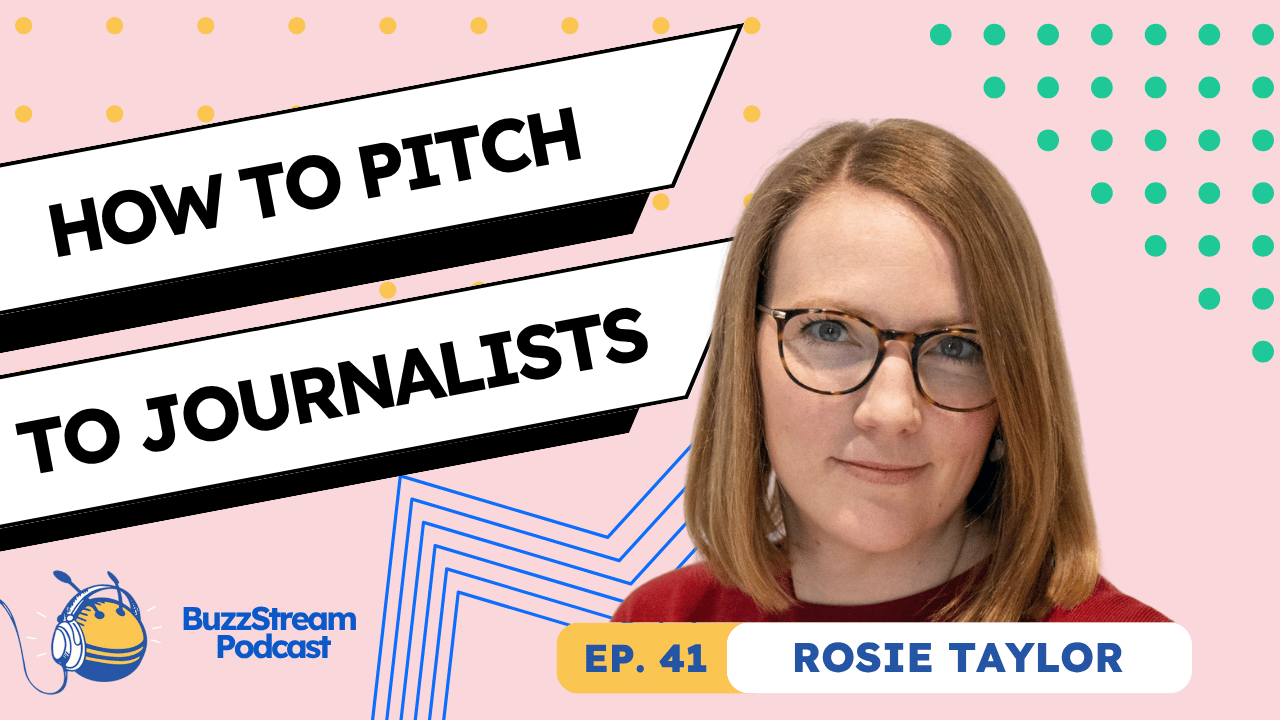
 Check out the BuzzStream Podcast
Check out the BuzzStream Podcast

